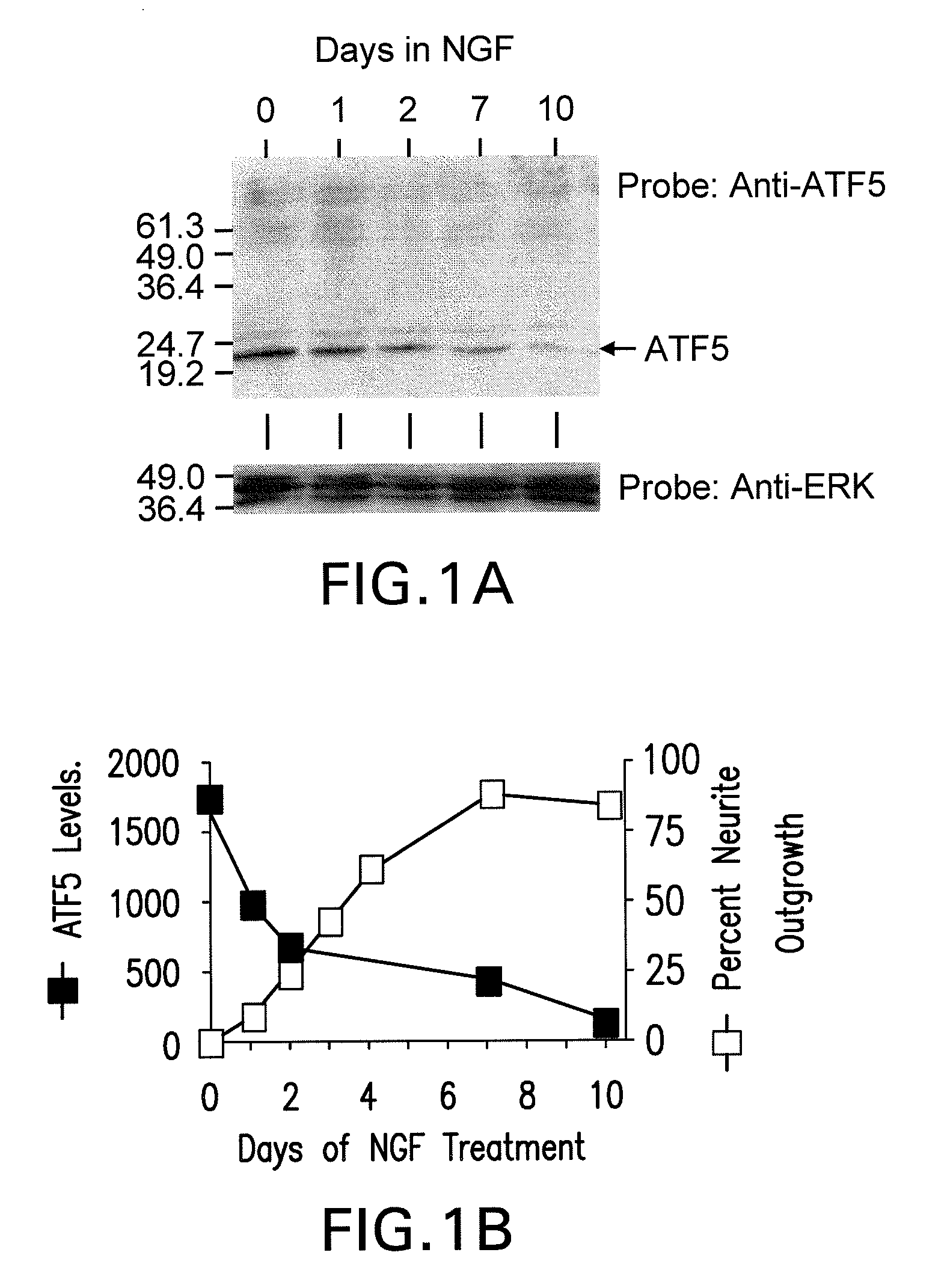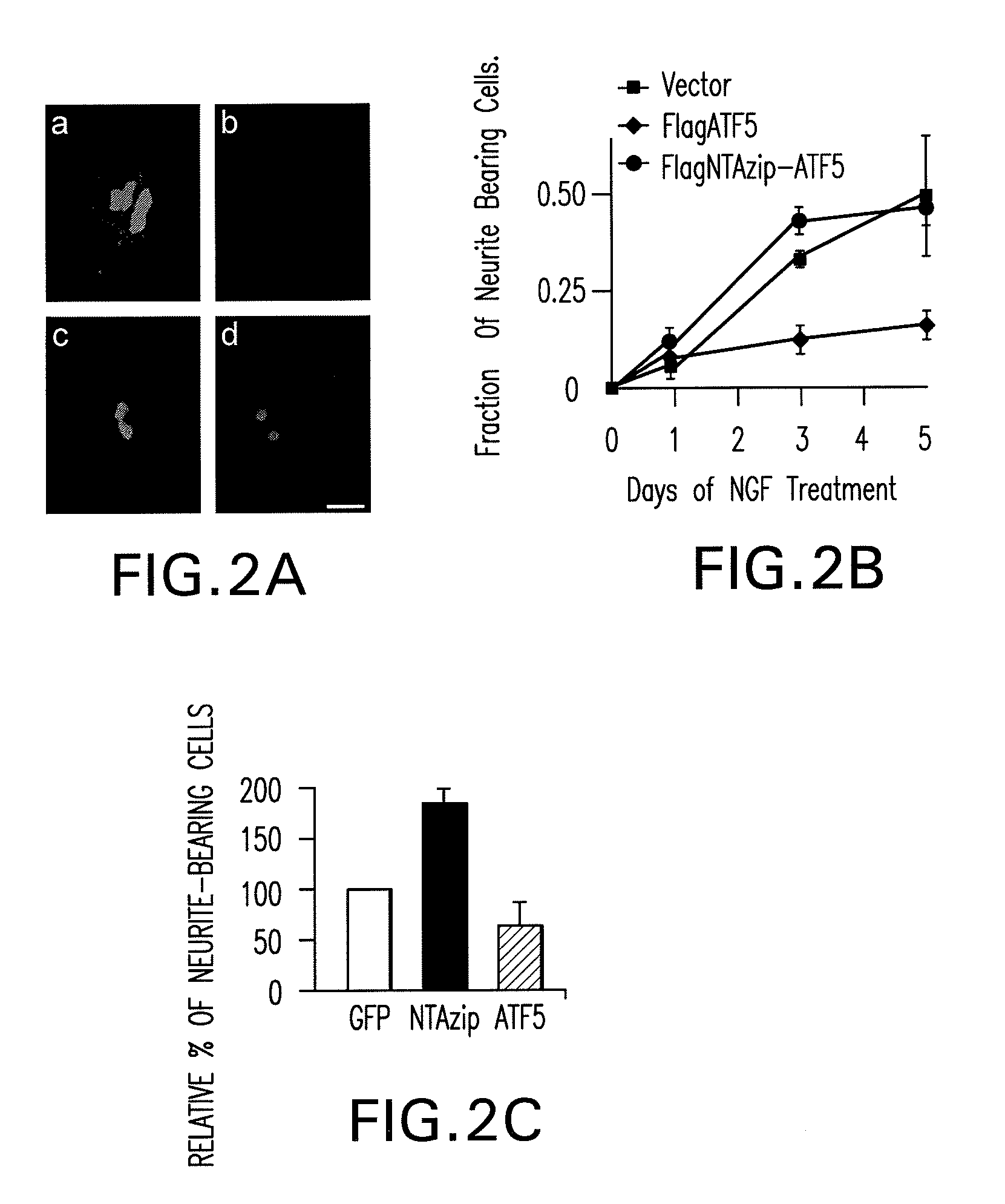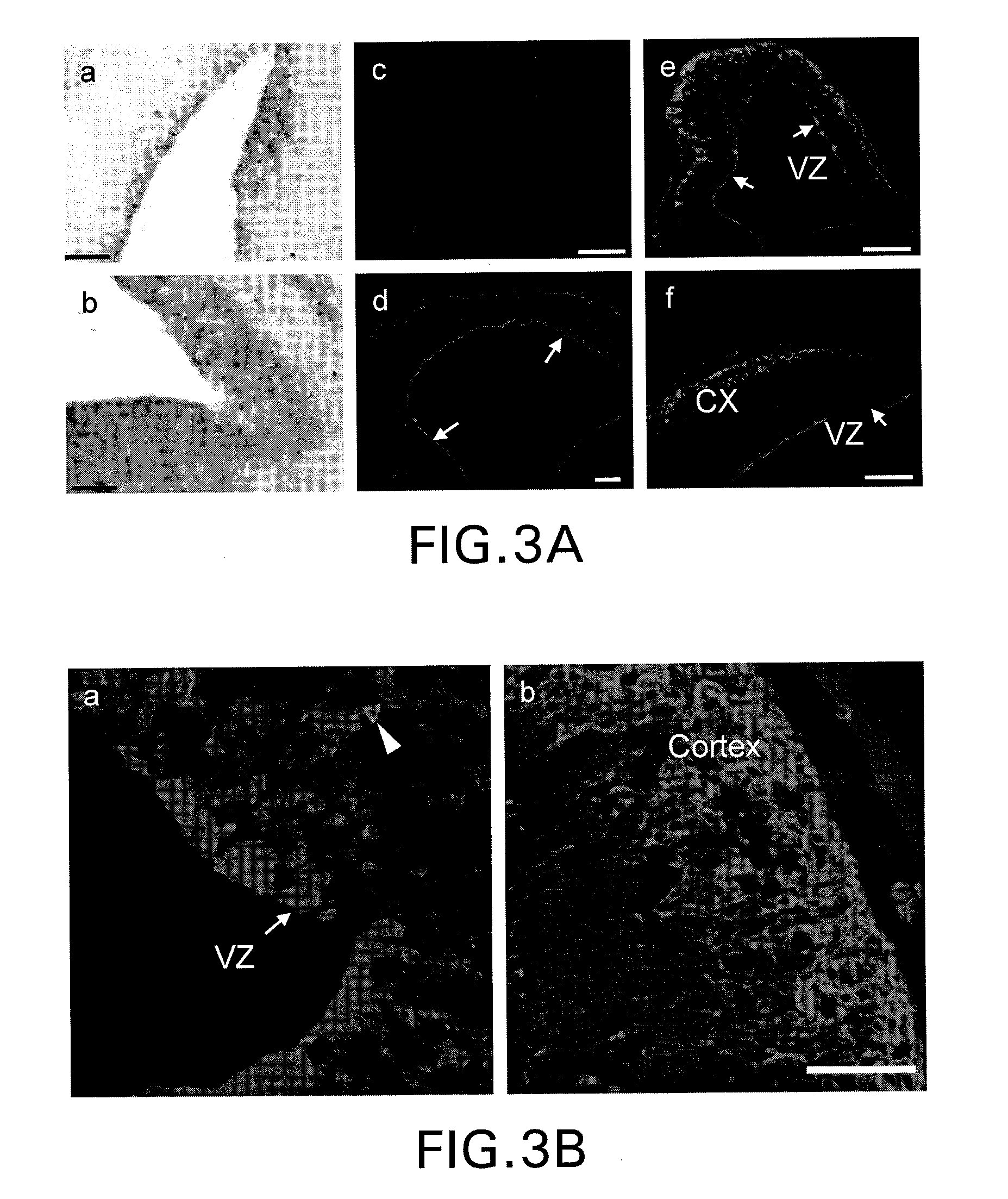Methods For Regulating The Growth And/Or Survival Of Tumor Cells And Stem Cells By Modulating The Expression Or Function Of The Transcription Factor ATF5
a transcription factor and gene regulation technology, applied in the field of gene regulation of tumor cells and stem cells, can solve the problems of inability to cure alzheimer's disease, inability to meet the needs of patients, so as to accelerate ngf-promoted neuritogenesis, promote ngf-promoted neuritogenesis, and improve the effect of nephrogenesis
- Summary
- Abstract
- Description
- Claims
- Application Information
AI Technical Summary
Benefits of technology
Problems solved by technology
Method used
Image
Examples
example 1
Reagents
[0168]Cell-culture media, RPMI 1640 and DMEM, and molecular biology reagents, Taq platinum DNA polymerase, SuperScript II reverse transcriptase, and LipofectAMINE 2000, were obtained from Invitrogen, Inc. (Carlsbad, Calif.). Donor horse and fetal bovine serum were obtained from JRH Biosciences, Inc. (Lenexa, Kans.). The Marathon cDNA amplification library kit was obtained from Clontech (Palo Alto, Calif.), and PCR primers were obtained from Integrated DNA Technologies or Life Technologies, Inc. Anti-FLAG M2 antibody was from Sigma Corp. (St. Louis, Mo.).
Cell Culture
[0169]PC12 cells were grown on collagen-coated dishes, as previously described (Greene et al., Establishment of a noradrenergic clonal line of rat adrenal pheochromocytoma cells which respond to nerve growth factor. Proc. Natl. Acad. Sci. USA, 73:2424-28, 1998), with or without human recombinant nerve growth factor (NGF) (Genentech, Inc.). Dissociated cultures of telencephalic cells were prepared from E14 Sprague-...
example 2
Materials and Methods
Reagents
[0225]Cell culture medium DMEM, molecular biology reagents and LipofectAMINE 2000 were from Invitrogen, Inc. Fetal bovine serum was from JRH Biosciences. Mouse monoclonal anti-GFP IgG1 was from Sigma. Goat anti-mouse Alexa 488, Alexa 568, goat anti-mouse IgG2a Alexa 488, goat anti-mouse IgG1 Alexa 568, goat anti-rabbit Alexa 488 and 568, and mouse IgG2a anti-GFP antibody were from Molecular Probes. Rabbit anti-GFP antibody was from BD Biosciences (Clontech). Rabbit anti-Ki67 was from Novacastra. Normal 10% goat-serum was from Zymed. Polyclonal rabbit anti-ATF5 was as previously described (7).
Immunostaining of Human Glioblastomas
[0226]Paraffin sections (10 μm) of surgically excised glioblastoma multiforme tumors (WHO, Grade IV) were provided by the Department of Pathology, Columbia University. Paraffin was removed by heating the sections at 60° C. for one to two hours followed by 3 incubations in 100% xylene for 5 min each. Subsequent incubations were in ...
example 3
ATF5 is Widely Expressed in an Array of Different Tumor Types
[0248]The inventors have screened various tumor types for expression of ATF5. The screen was conducted using micro tissue array with anti-ATF5 antiserum, and the resulting data was interpreted by a pathologist. The results demonstrate that ATF5 is widely expressed by various tumor. The following is a list of specific tumor types that tested positive for ATF5 (number positive for ATF5 / total number assessed): breast (20 / 28); ovary (18 / 26); endometrium (17 / 25); gastric (20 / 22); colon (20 / 24); liver (10 / 14); pancrease (26 / 28); kidney (16 / 22); bladder (24 / 26); prostate (20 / 22); testis (6 / 10); skin (8 / 10); esophagus (8 / 14); tongue (16 / 20); mouth (8 / 8); parotid (4 / 6); larynx (9 / 11); pharynx (2 / 4); lymph node (4 / 12); lung (22 / 24); and brain (8 / 12).
PUM
| Property | Measurement | Unit |
|---|---|---|
| frequency | aaaaa | aaaaa |
| survival time | aaaaa | aaaaa |
| apparent molecular mass | aaaaa | aaaaa |
Abstract
Description
Claims
Application Information
 Login to View More
Login to View More - R&D
- Intellectual Property
- Life Sciences
- Materials
- Tech Scout
- Unparalleled Data Quality
- Higher Quality Content
- 60% Fewer Hallucinations
Browse by: Latest US Patents, China's latest patents, Technical Efficacy Thesaurus, Application Domain, Technology Topic, Popular Technical Reports.
© 2025 PatSnap. All rights reserved.Legal|Privacy policy|Modern Slavery Act Transparency Statement|Sitemap|About US| Contact US: help@patsnap.com



